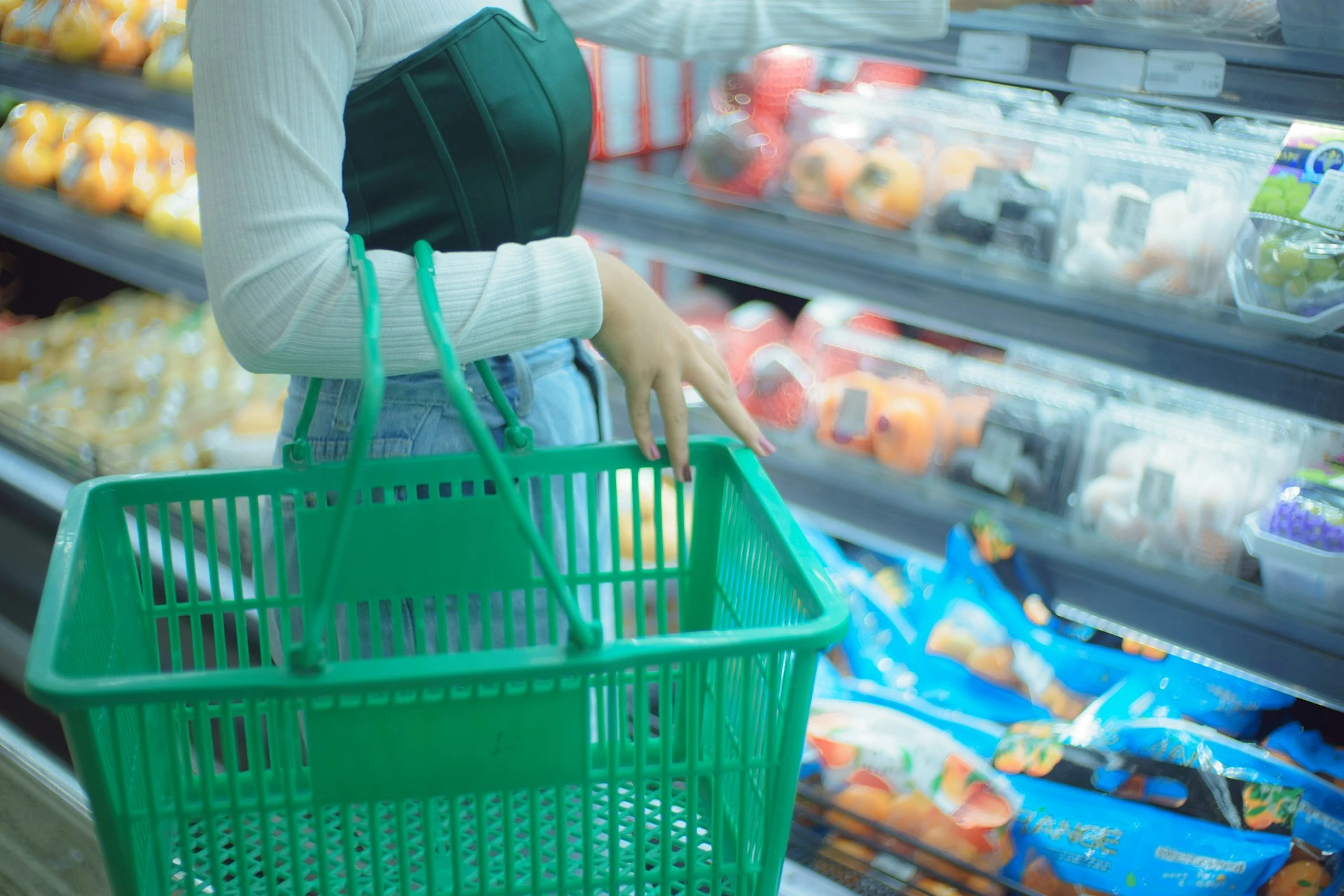Table of Contents
Managing diabetes starts at the grocery store. What you put in your cart becomes what you put on your plate—and that shapes your blood sugar, energy, mood, and long-term health.
But grocery shopping can feel overwhelming with so many labels, brands, and “healthy” claims. Low-fat? Sugar-free? Whole grain? It’s not always easy to tell what actually supports glucose balance.
This guide will walk you through what to buy, what to limit, and what to avoid—so you can shop with clarity, confidence, and control.
Let’s build a diabetic-friendly grocery list that works in real life.
Start With the Basics: The Plate Method
Use this simple visual when planning meals and shopping:
- ½ plate non-starchy vegetables
- ¼ plate lean protein
- ¼ plate complex carbohydrates (high-fiber and minimally processed)
- Add a small serving of healthy fat
This method helps balance blood sugar by combining fiber, protein, and fat with moderate portions of carbs.
Now let’s turn that concept into a list.
✅ What to Buy: Diabetes-Friendly Staples
Vegetables (Non-Starchy)
These are your best friends. Packed with fiber, nutrients, and very low in carbs.
- Leafy greens (spinach, kale, arugula, romaine)
- Broccoli, cauliflower, cabbage
- Zucchini, bell peppers, mushrooms
- Cucumbers, tomatoes, onions
- Green beans, asparagus, Brussels sprouts
Buy fresh, frozen, or canned (low-sodium, no sugar added). Frozen veggies are just as nutritious and great for quick meals.
Fruits (Low-Glycemic)
Whole fruits (with fiber) are better than fruit juice or dried fruit. Choose:
- Berries (strawberries, blueberries, raspberries)
- Apples, pears, peaches (with skin)
- Kiwi, citrus fruits (oranges, grapefruit)
- Cherries, plums
Buy fresh or frozen (no added sugar). Limit bananas, mangoes, and grapes due to higher glycemic impact—but they’re still okay in small portions.
Whole Grains and Legumes
Choose high-fiber, slow-digesting carbs to avoid spikes:
- Steel-cut or old-fashioned oats
- Quinoa, barley, farro
- Brown rice (or wild rice)
- Lentils, black beans, chickpeas
- Whole-grain bread (look for 3g+ fiber per slice)
- Whole-grain pasta or legume-based pasta
Look for “100% whole grain” on the label—not just “wheat” or “multi-grain.”
Lean Protein
Protein slows digestion and helps manage hunger and blood sugar.
- Chicken or turkey breast
- Salmon, tuna, sardines, cod
- Eggs and egg whites
- Tofu, tempeh, edamame
- Plain Greek yogurt (unsweetened)
- Cottage cheese
- Canned beans (rinsed)
- Low-sodium deli meat (uncured, nitrate-free)
Frozen and canned options are convenient—just check sodium and additives.
Healthy Fats
Good fats support heart health and improve satisfaction from meals.
- Avocados
- Extra virgin olive oil
- Chia seeds, flaxseeds, hemp seeds
- Walnuts, almonds, pecans
- Natural nut butters (peanut, almond—no sugar added)
- Fatty fish (salmon, mackerel, sardines)
Stick to small portions—fats are calorie-dense, but very beneficial.
Dairy and Dairy Alternatives
- Unsweetened almond, soy, or oat milk
- Plain Greek yogurt
- Low-fat or full-fat cheese (in moderation)
- Kefir (unsweetened)
Avoid flavored yogurts and sweetened plant milks—they often contain as much sugar as soda.
Pantry Essentials
- Herbs and spices (cinnamon, turmeric, garlic, cumin)
- Apple cider vinegar or balsamic vinegar
- Low-sodium broth
- Canned tomatoes (no added sugar)
- Mustard, hot sauce, salsa (check sugar content)
- Sugar substitutes: stevia, monk fruit, erythritol
- Whole-grain crackers or rice cakes (limit portion)
These staples add flavor without raising blood sugar.
⚠️ What to Limit
Refined Grains
- White bread, white rice, regular pasta
- Most baked goods and pastries
- Crackers or cereals with <2g fiber/serving
Refined grains digest quickly and raise blood sugar faster.
Processed Meats
- Bacon, sausage, hot dogs
- Deli meats with nitrates or added sugars
These are often high in sodium and saturated fat.
Sweetened Drinks
- Soda, sweet tea, lemonade
- Bottled iced coffee or flavored milk
- Fruit juice or smoothies with added sugar
Choose water, sparkling water, or herbal teas instead.
Flavored or Sweetened Dairy
- Yogurt with fruit on the bottom
- Coffee creamers
- Sweetened almond or oat milk
Look for “unsweetened” on the label and check total carbs.
❌ What to Avoid Completely (or Almost Always)
Ultra-Processed Foods
- Packaged desserts (cookies, cakes, donuts)
- Candy and chocolate bars
- Frozen meals with high sodium and sugar
- Sugary breakfast cereals
These offer little nutritional value and cause blood sugar to spike.
“Sugar-Free” But Still Risky
- Sugar-free cookies, candy, or soda (contain sugar alcohols like maltitol, which can still impact glucose or cause digestive upset)
- “Low-fat” products often add sugar to compensate for taste
Always check total carbs and added sugar—even in “diet” products.
Tips for a Better Shopping Experience
- Shop the perimeter of the store: this is where fresh food usually lives
- Don’t shop hungry—you’ll be more tempted by quick-fix items
- Read labels: look at total carbs, fiber, serving size, and ingredients
- Make a list before going to stay focused and save time
- Meal plan around what you buy to reduce food waste and stress
A Sample Diabetic-Friendly Grocery List
Here’s a simplified list to take with you:
Produce:
Spinach, kale, zucchini, bell peppers, onions, garlic, broccoli, berries, apples, citrus fruits
Proteins:
Chicken breast, canned tuna, eggs, tofu, black beans, Greek yogurt
Grains & Legumes:
Steel-cut oats, brown rice, lentils, quinoa, whole grain bread
Fats:
Olive oil, avocado, walnuts, peanut butter
Pantry:
Canned tomatoes, no-sugar-added salsa, cinnamon, turmeric, almond milk (unsweetened)
Snacks:
Carrot sticks, hummus, hard-boiled eggs, chia pudding, cheese cubes
This is just a starting point. Personalize based on your tastes, budget, and health needs.
Shopping smart doesn’t mean eating boring. With the right foods in your cart, you’ll have everything you need to prepare balanced meals that support stable blood sugar—and still taste great.
Scientific References
- American Diabetes Association. (2022). Diabetes Supermarket Shopping Guide
- Centers for Disease Control and Prevention. (2023). Healthy Eating With Diabetes
- Harvard T.H. Chan School of Public Health. (n.d.). Carbohydrates and Blood Sugar

Leave a Reply